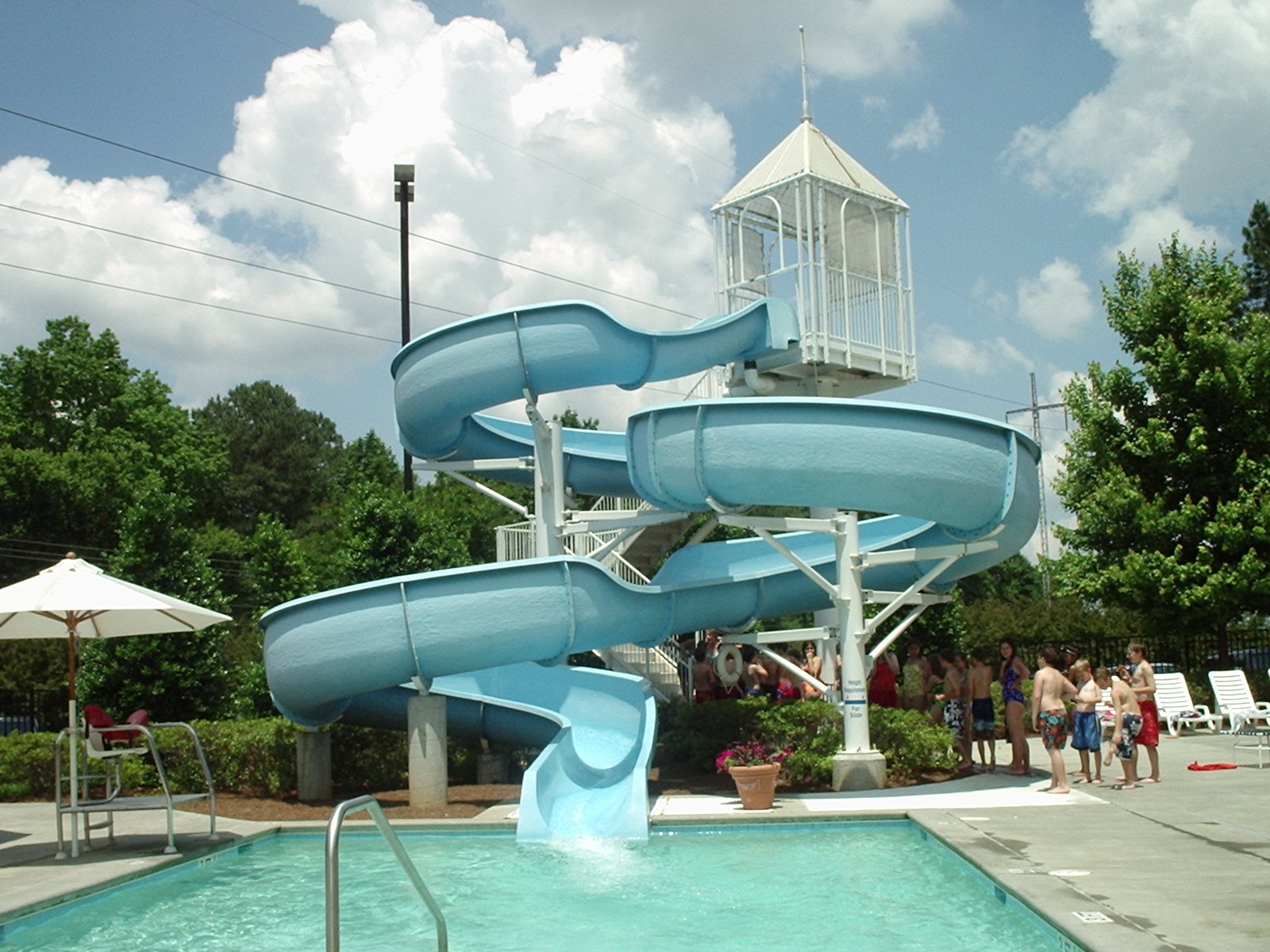As summer approaches, we eagerly await our chance to take a break from our hard work throughout the year. To beat the heat, we often head to water parks, but have you ever wondered how water parks and water slides work? Continue reading to find out the basic science behind water slides.
Gravity, Potential Energy, Kinetic Energy, and Inertia
The number one force that helps us enjoy water slides is gravity. Gravity is the pull of Earth on all objects on its surface, including you. To put it simply, what goes up must come down.
The second rule that helps explain how slides work is the law of conservation of energy. It means that energy changes from one form to another. This rule explains why we usually climb a high flight of stairs before we go down a slide. When we climb the stairs to the slide, we have kinetic energy (energy of motion); when we stop at the top of the stairs, the kinetic energy changes to potential energy (stored energy), which changes once again to kinetic energy when we start sliding down the slide.
Gravity is not the only force that acts on our bodies while sliding; our clothes cause friction, which resists the force of gravity when we go down a slide. That is why most water slides have a continuous stream of water flowing on the slide to act as a lubricant, which works as oil or grease that decreases friction between metal parts.
If you tried one of the snake-like slides, you may be wondering what keeps you sliding instead of flying off the slide when taking a turn due to your inertia. If you are confused about what inertia means, remember a time you were riding in a car and the driver suddenly hit the brakes. Your inertia is what makes you move forward and hit the seat in front of you to keep you moving in the same direction. The curves in the slide redirect your path and prevent your inertia from moving you in the same direction you were moving.

Safety Precautions
Water slides are a lot of fun, but their history of accidents and injuries is not. Luckily, new computer software has helped designers design safer slides; still, it is important to follow these safety precautions to avoid accidents.
- Make sure you follow the rules of the park regarding acceptable height, weight, swimming clothes material, and the ability to swim. Do not try to bend these rules as this may put your life at risk.
- Avoid drinking pool water, since it is often contaminated with harmful organisms like E. coli, which can make you sick.
- Always go down slides with your feet down not your head! It is extremely dangerous to go down slides with your head first because you move at a very high speed while sliding putting you at a risk of injuries.
- Always wait for your turn. Do not hold hands with others while sliding as this may injure you both.
- If you are not a good swimmer, wear an approved life jacket to protect yourself from drowning.
Now that you have learned how water slides work, remember to follow safety precautions during your next trip to enjoy your experience.
References
solarschools.net
nationalgeographic.com
science.howstuffworks.com
injuryprevention.bmj.com
www.healthychildren.org
paradiseslides.com
Photo credit: Photo by Frans Van Heerden from Pexels